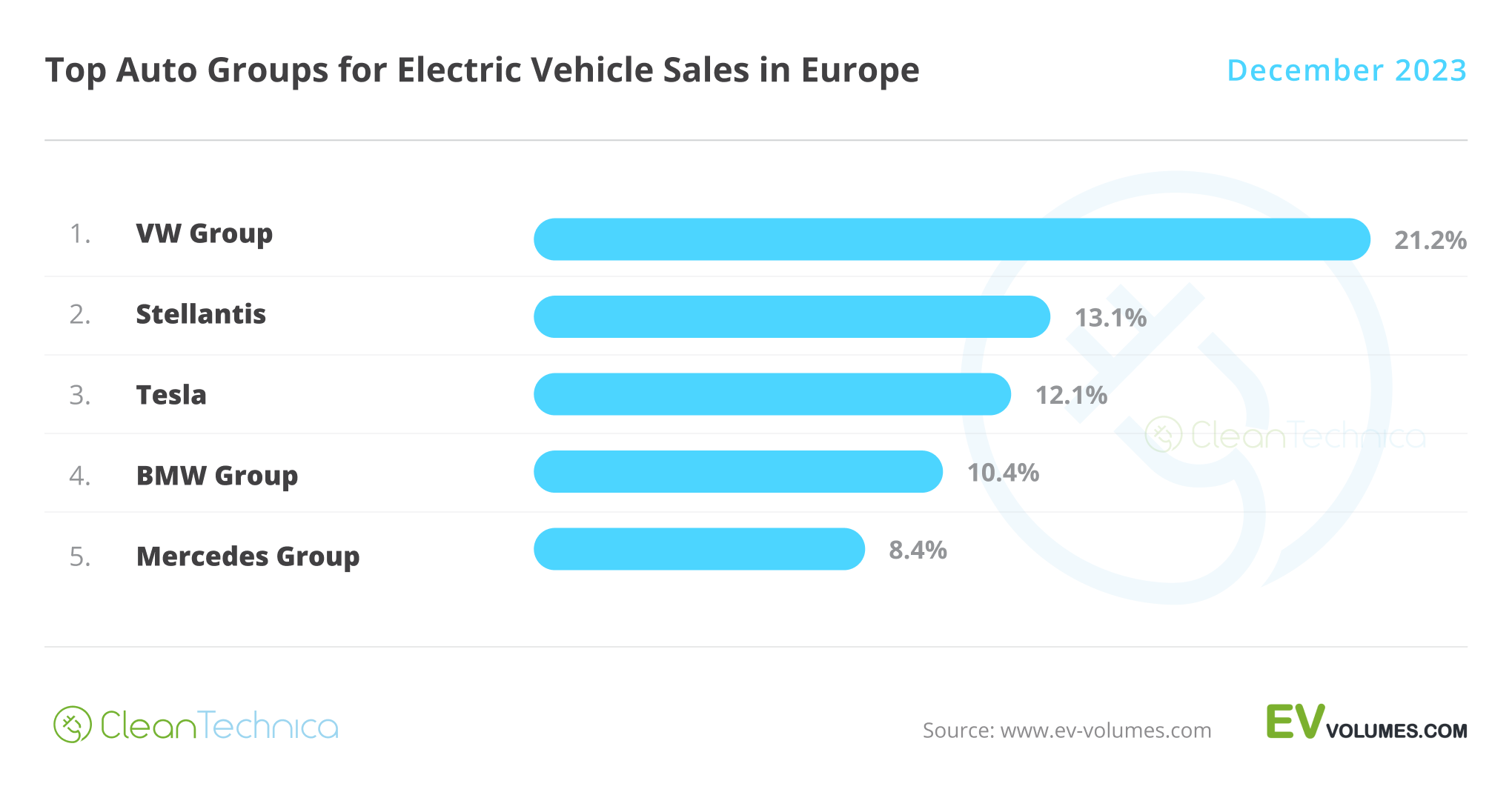Sign up for daily news updates from CleanTechnica on email. Or follow us on Google News!
Stellantis was one of the biggest laggards in electric cars for several years. Former Fiat Chrysler Automobiles CEO Sergio Marchionne kicked it off. He lobbied against electric vehicle and fuel economy regulations, and he even infamously told Fiat Chrysler Automobiles (FCA) customers to not buy the Fiat 500e at one point, claiming that the company was losing money on each sale (a misleading claim).
Sergio Marchionne’s successor, current CEO of Stellantis Carlos Tavares, has made his own statements against the transition to electric vehicles, claiming at times that it was going too fast and targets were too ambitious.
Nonetheless, with European Union regulations dragging automakers into the EV revolution, Stellantis developed a number of electric car models. And it turned out that they’re not the worst EVs on the market. While you’ll just find a couple of Stellantis electric cars on Europe’s plugin vehicle top 20 list in 2023 (see: Fiat 500e and Peugeot e-208), Stellantis as a whole is now the second best selling auto group in terms of plugin vehicles. It’s only trailing Volkswagen Group.
So, on the one hand, it’s not the craziest news to find out that Stellantis has started making a profit on its electric vehicles and “in contrast to some rivals, it will not cut back on producing EVs,” as CNN reported recently.
“Stellantis’ strategy is very different … from the other competitors from Detroit. We’re keeping full speed on electrification,” Tavares told journalists. How times have changed! And how influential making good money on a product can be. Admittedly, Stellantis is still counting plugin hybrid sales as a considerable portion of its plugin sales, and that’s an issue, but at least the company’s CEO isn’t trash talking electric vehicles any more and is happy to sell more plugin vehicles.
“We are working very, very hard to bring the profit margins of electrified vehicles to the same level as ICEs,” Tavares added. “We are not there yet. But we are getting closer.”
Naturally, making a profit on electric vehicles is all about selling them at scale. The Fiat 500e wasn’t profitable when its sales were still paying off the bills from R&D and setting up production lines. “While non-union electric vehicle maker Tesla is the most profitable US automaker, it was losing money until 2019. At that point Tesla was making as few EVs as the legacy automakers, such as Stellantis, Ford and GM, are now manufacturing as they move towards a pure EV lineup.” Things change once you start selling hundreds of thousands or millions of units of a model.
“Ford, the only company to break out results separately for electric and traditional vehicles, reported that it lost $4.7 billion in EVs last year, or more than $40,000 per vehicle. General Motors does not break out results for EVs, only saying that it remains on track to become profitable on those vehicles in the second half of this year. Both have pulled back on production plans for EVs in recent months.”
So, yes, Ford and GM have some issues with electric vehicles, and that likely explains much of the hype we’ve been seeing about EV sales not being all they were hoped to be. For much more on that topic, see:
Have a tip for CleanTechnica? Want to advertise? Want to suggest a guest for our CleanTech Talk podcast? Contact us here.
Latest CleanTechnica TV Video
I don’t like paywalls. You don’t like paywalls. Who likes paywalls? Here at CleanTechnica, we implemented a limited paywall for a while, but it always felt wrong — and it was always tough to decide what we should put behind there. In theory, your most exclusive and best content goes behind a paywall. But then fewer people read it!! So, we’ve decided to completely nix paywalls here at CleanTechnica. But…
Thank you!
CleanTechnica uses affiliate links. See our policy here.





